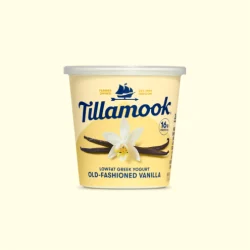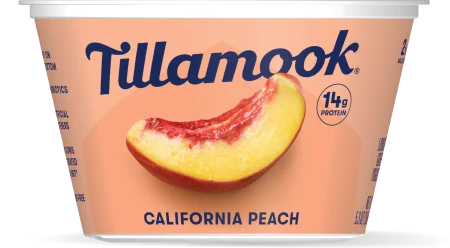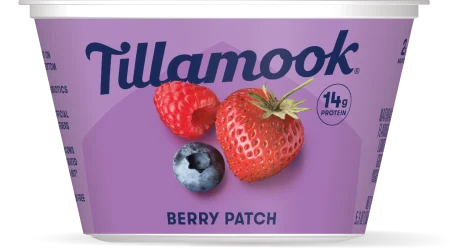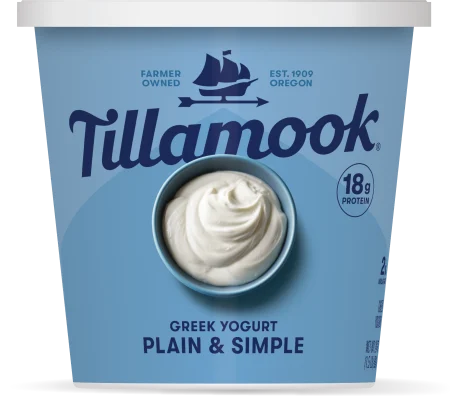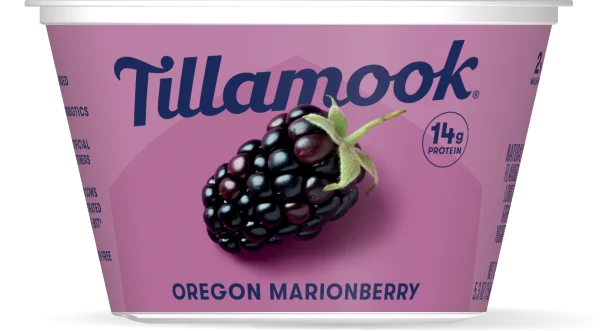
Greek
Oregon Marionberry Yogurt
Nutrition & Allergens
Nutrition Facts
- Serving Size 1 Container (About 150g)
- Servings Per Container 1
- Calories 140
| Amount | %DV* | |
|---|---|---|
| Total Fat | 3g | 4 |
| Saturated Fat | 2g | 10 |
| Trans Fat | 0g | |
| Cholesterol | 10mg | 3 |
| Sodium | 40mg | 2 |
| Total Carbohydrates | 15g | 5 |
| Dietary Fiber | 0g | 0 |
| Total Sugars | 12g | |
| Added Sugars | 8g | 16 |
| Protein | 14g | 28 |
| Vitamin D | 0mcg | 0 |
| Calcium | 100mg | 8 |
| Iron | 0mg | 0 |
| Potassium | 160mg | 4 |
Allergens
Contains: Milk.Ingredients
Pasteurized Skim Milk and Cream, Water, Sugar, Cornstarch, Marionberries, Natural Flavor, Black Currant Juice Concentrate (Color), Lemon Juice Concentrate, Guar Gum, Fruit and Vegetable Juice (Color), Live Active Cultures:, (S. thermophilus, B. lactis, L/ acidophilus, L. casei, L. rhamnosus, L. lactis, L. bulgaricus, Lactococcus lactis)
Frequently asked questions
Tillamook Yogurt is mostly available on the west coast, but we are always working on expanding! At the moment you can find our yogurt in Alabama, Alaska, Arizona, California, Colorado, Florida, Georgia, Hawaii, Idaho, Kansas, a few places in Louisiana, Missouri, Montana, Nevada, New Mexico, North Carolina, Oklahoma, Oregon, Tennessee, Texas, Utah, and Washington! Feel free to use our Where to Buy tool to find it at a retailer near you.
The cultures we use in Tillamook Good and Creamy Low Fat Yogurt are L. bulgaricus and S. thermophilus. The cultures in our Tillamook Greek Yogurt are S.Thermophilus, L. Bulgaricus, L.Acidophilus, B. Lactis, L.Casei, L.Rhamnosus, and L.Lactis. If you would like to see more nutritional information about our yogurt, please feel free to check the Yogurt product page on our website or contact us.
Yes! All of our yogurts are made with milk that has been pasteurized.
No way! Tillamook Yogurt does not contain artificial colors, sweeteners, or flavors. It’s also made with milk from cows not treated with artificial growth hormones.
*Please note that the FDA has stated that no significant difference has been shown between milk derived from rBST treated and non-rBST treated cows.
